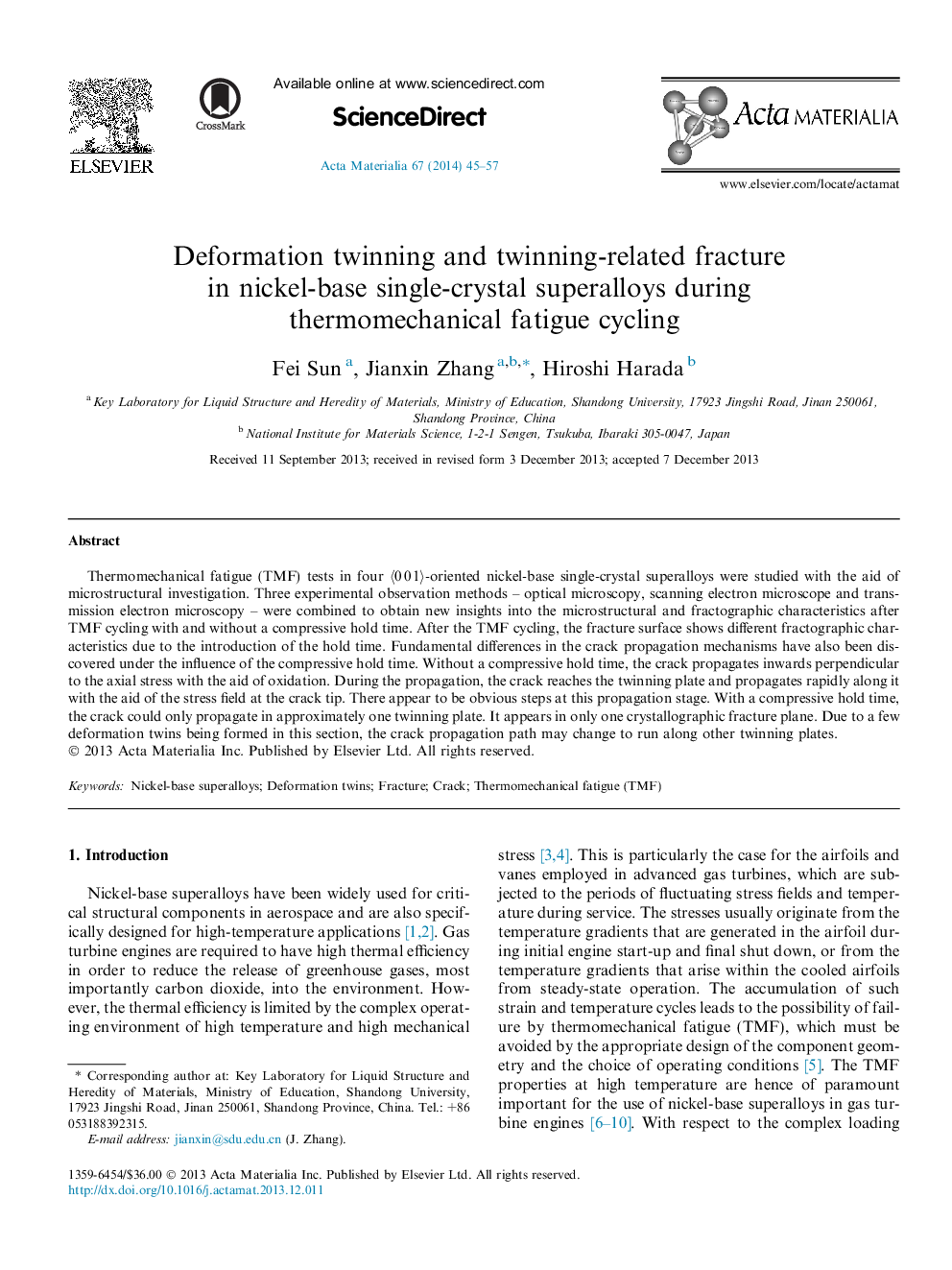| Article ID | Journal | Published Year | Pages | File Type |
|---|---|---|---|---|
| 7882461 | Acta Materialia | 2014 | 13 Pages |
Abstract
Thermomechanical fatigue (TMF) tests in four ã0Â 0Â 1ã-oriented nickel-base single-crystal superalloys were studied with the aid of microstructural investigation. Three experimental observation methods - optical microscopy, scanning electron microscope and transmission electron microscopy - were combined to obtain new insights into the microstructural and fractographic characteristics after TMF cycling with and without a compressive hold time. After the TMF cycling, the fracture surface shows different fractographic characteristics due to the introduction of the hold time. Fundamental differences in the crack propagation mechanisms have also been discovered under the influence of the compressive hold time. Without a compressive hold time, the crack propagates inwards perpendicular to the axial stress with the aid of oxidation. During the propagation, the crack reaches the twinning plate and propagates rapidly along it with the aid of the stress field at the crack tip. There appear to be obvious steps at this propagation stage. With a compressive hold time, the crack could only propagate in approximately one twinning plate. It appears in only one crystallographic fracture plane. Due to a few deformation twins being formed in this section, the crack propagation path may change to run along other twinning plates.
Related Topics
Physical Sciences and Engineering
Materials Science
Ceramics and Composites
Authors
Fei Sun, Jianxin Zhang, Hiroshi Harada,
